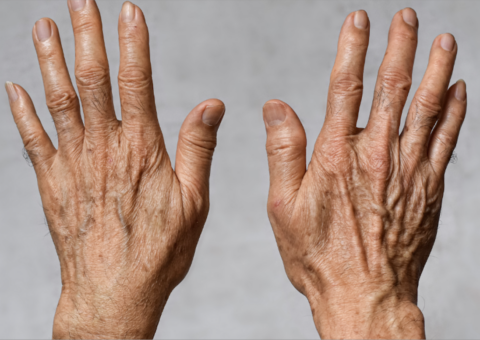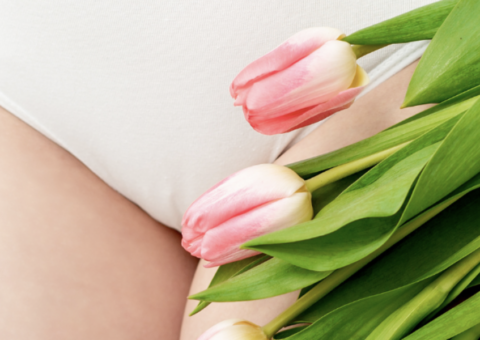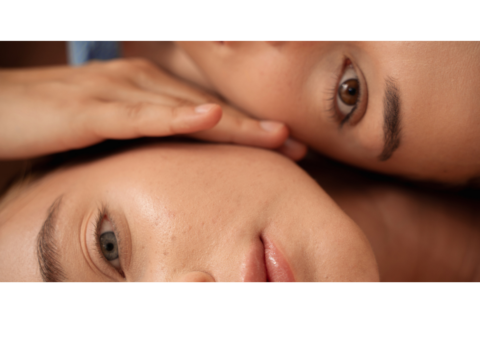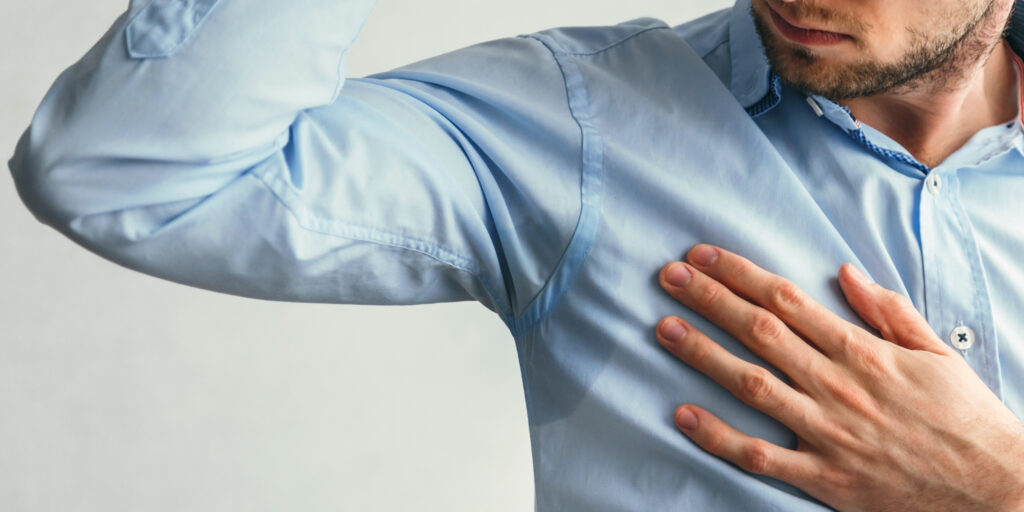
When we think of sweating, words like hot and sticky come to mind. But beyond the first impression, there are numerous health benefits to sweating. Sweating is your body’s mechanism to cool itself. It also helps eliminate toxins and waste products. Your nervous system automatically triggers your sweat glands when your body temperature rises. Sweating also normally occurs, especially on your palms when you’re nervous. Most of the time, sweating serves its purpose rather quickly. We cool down, stop sweating, and give it no further thought.
But if you’re one of 365 million people worldwide who live with excessive sweating, known in medical terms as hyperhidrosis, you sweat more than you need to.
![]() Everybody sweats, so when is it not normal?
Everybody sweats, so when is it not normal?
Hyperhidrosis is abnormally excessive sweating that’s not necessarily related to heat or exercise. You may sweat so much that it soaks through your clothes or drips off your hands.
You should seek medical advice if you experience any of the following-
- Excessive sweating that’s occurred for at least six months without an apparent reason.
- Incidents of excessive sweating at least once a week.
- Sweating that interferes with your daily activities such as work or relationships.
- Maybe you have extremely sweaty palms. Or perhaps it’s your feet, underarms or face that are drenched even when it is cool and you are not exercising.
Hyperhidrosis can be emotionally and physically disruptive to your daily life.
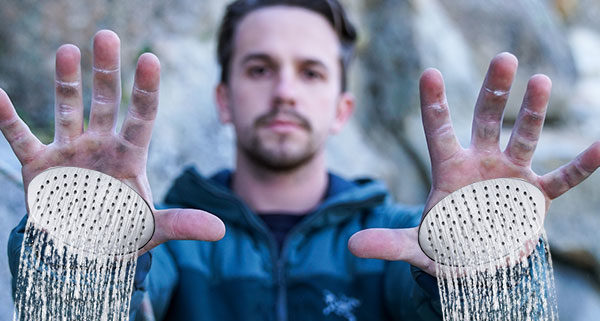
There are two main types of hyperhidrosis
![]() Primary hyperhidrosis
Primary hyperhidrosis
With this type, the nerves responsible for signalling your sweat glands become overactive, even though they haven’t been triggered by physical activity or a rise in temperature. With stress or nervousness, the problem becomes even worse. This type usually affects your palms and soles and sometimes your face.
There is no underlying medical cause for this type of hyperhidrosis. It may have a genetic component, as it sometimes runs in families.
![]() Secondary hyperhidrosis
Secondary hyperhidrosis
Secondary hyperhidrosis occurs when excess sweating is due to a medical condition. It’s the less common type and is more likely to cause sweating all over your body. Conditions that may lead to heavy sweating include:
- Diabetes
- Thyroid disease
- Obesity
- Hormonal changes (menopause)
- Infections like TB
- Types of cancer
- Medication
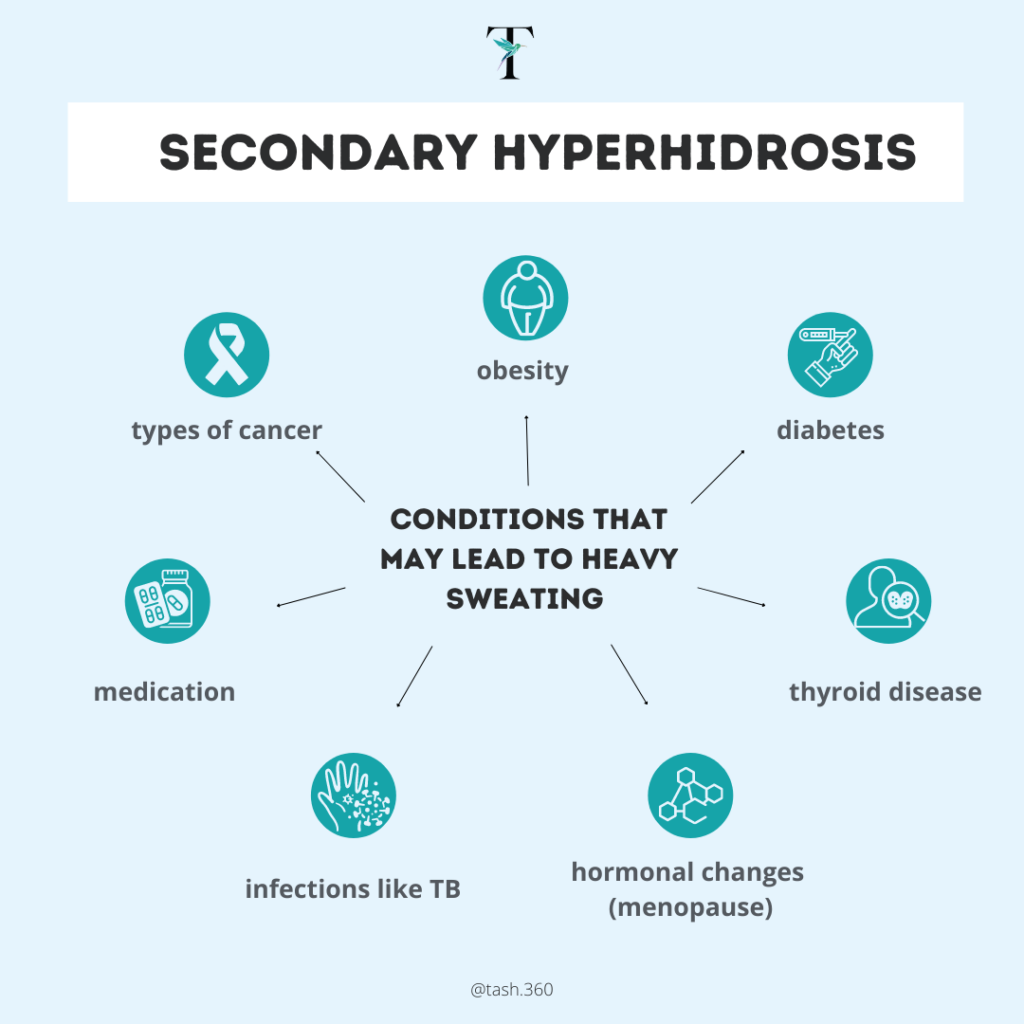
Having clammy or dripping hands and perspiration-soaked clothing is not only embarrassing, people who sweat profusely are also more prone to skin infections.
So whether you are experiencing makeup meltdown, underarm wetness, foot odour or all three- overactive sweat glands can definitely cramp your style.
The good news is there are ways to combat hyperhidrosis and cope better with it.
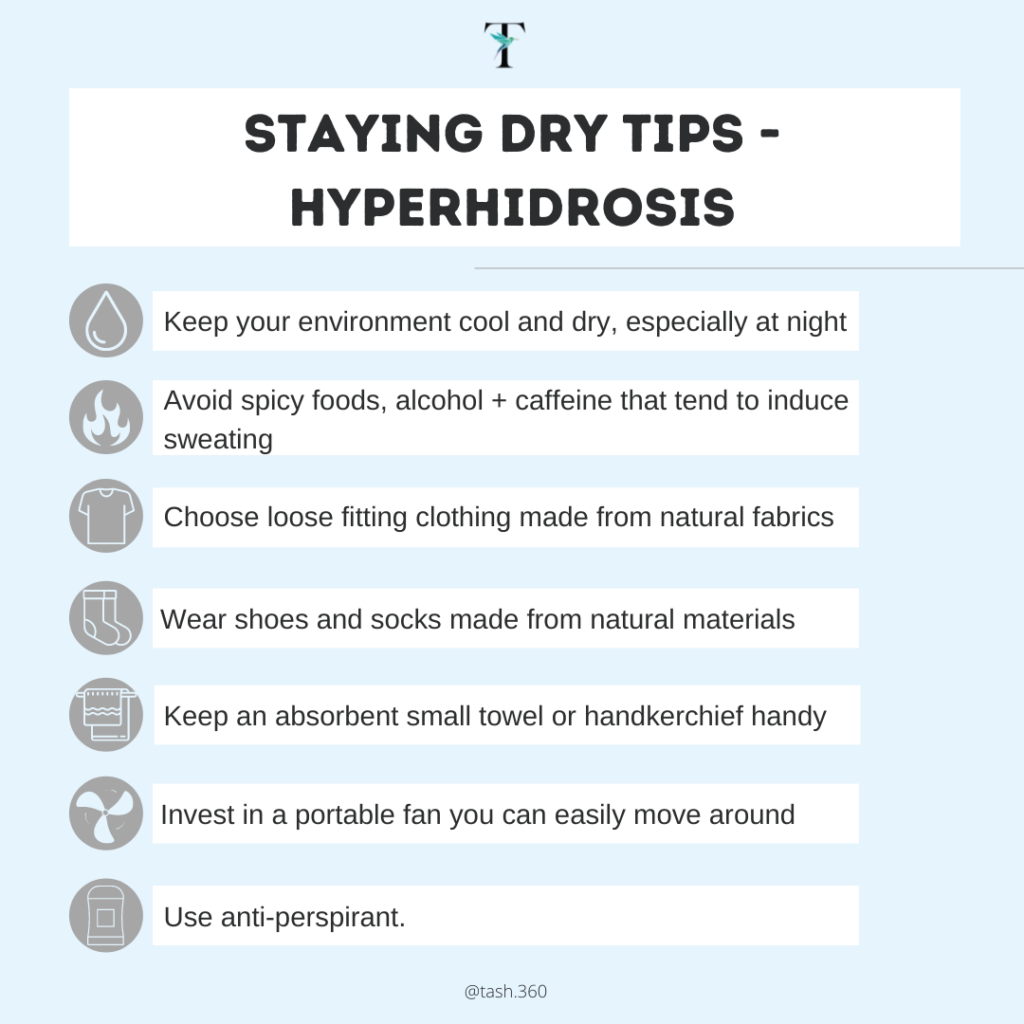
![]() Staying dry tips- lifestyle and home remedies
Staying dry tips- lifestyle and home remedies
- Keep your environment cool and dry, especially at night
- Avoid spicy foods, alcohol and caffeine that tend to induce sweating
- Choose loose fitting clothing made from natural fabrics
- Wear shoes and socks made from natural materials
- Keep an absorbent small towel or handkerchief handy to wipe away sweat and keep your skin dry
- Invest in a portable fan you can easily move around
- Use anti-perspirant. Non-prescription antiperspirants contain aluminium based compounds that temporarily block the sweat pore. This reduces the amount of sweat that reaches your skin.
![]() Sweat Solutions
Sweat Solutions
Your doctor may prescribe an antiperspirant with 10-15 % aluminium salts. While advertised mainly for the armpits, these agents can also be used on the palms, soles and forehead.
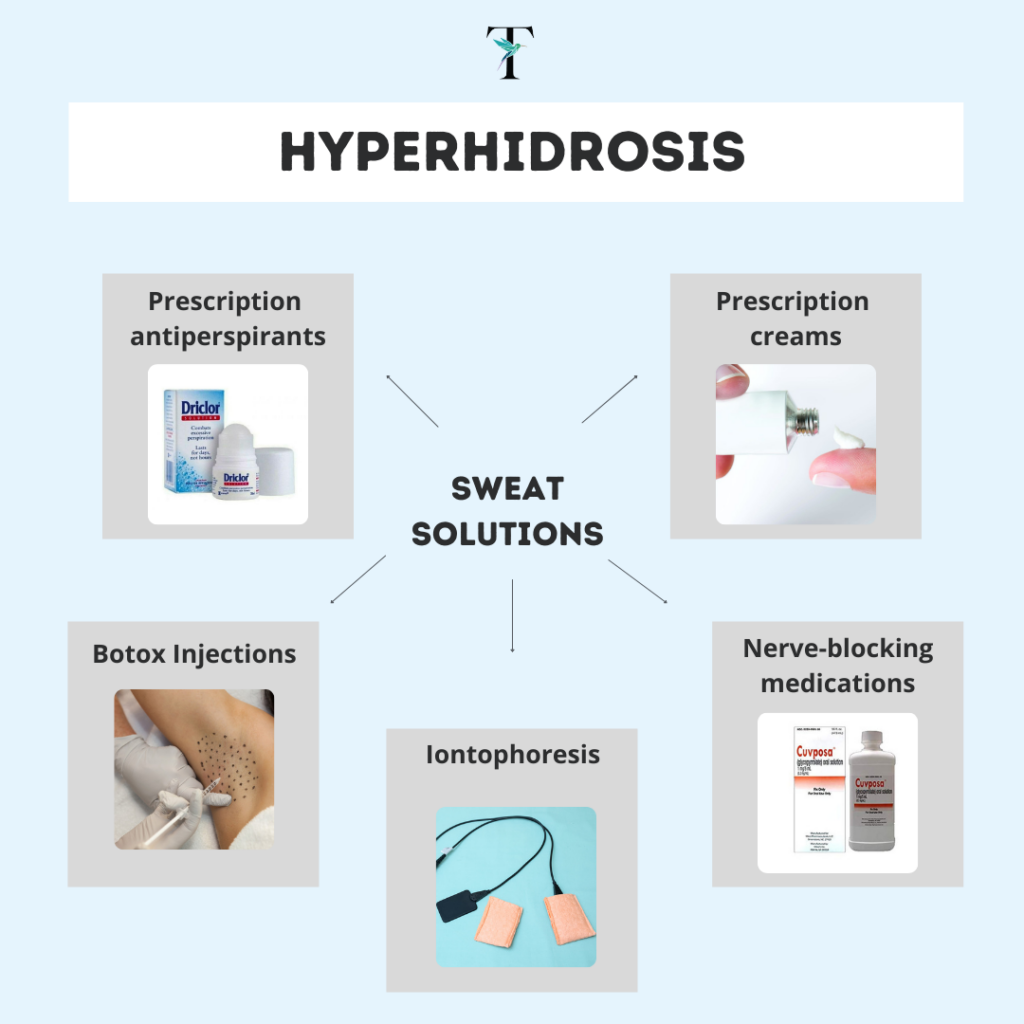
![]() Prescription Cream
Prescription Cream
A prescription cream that contains glycopyrrolate may help hyperhidrosis that affects the face and head. Internationally these are available as a spray, powder, roll-on and wipes.
![]() Iontophoresis
Iontophoresis
The activity of sweat glands is temporarily reduced by passing a low-level electric current through the skin. This is done at a medical facility, but kits for home use are also available.
![]() Nerve-blocking Medications
Nerve-blocking Medications
Some oral medications, such as glycopyrrolate, block communication between nerves which reduces sweating.
![]() Botox Injections
Botox Injections
Botox injections help to paralyse sweat glands. Since 2004 Botox has been a well- accepted treatment for excessive sweating. But it can also be used for less serious cases of sweating. In fact celebrities have been known to get a little underarm Botox before award season. Sweat stains are not an option when you’re wearing an expensive couture gown on loan. The effect lasts six to nine months and can be done on the forehead, armpits, palms and soles.
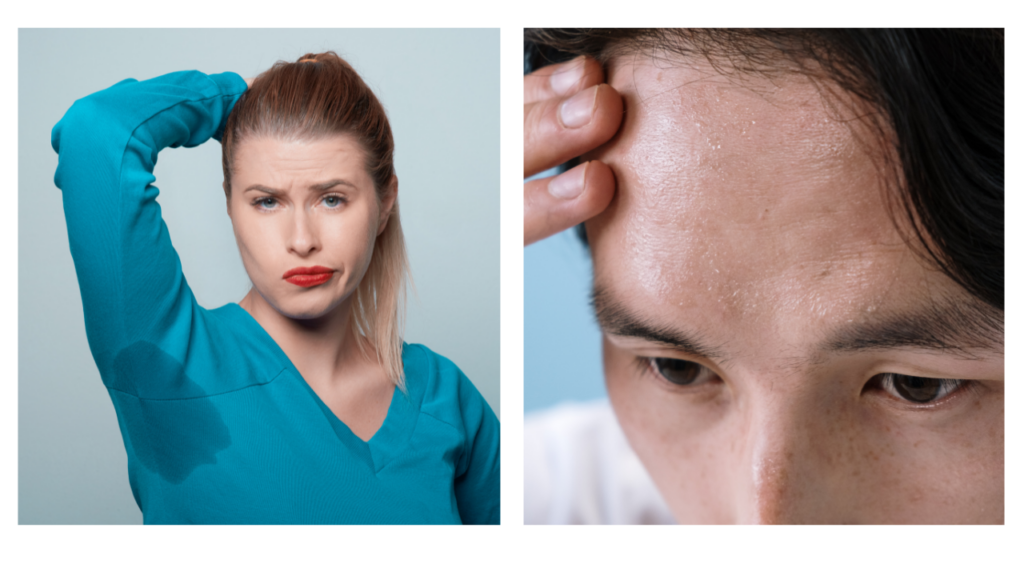
For more severe cases there are surgical procedures available
![]() Sweat gland removal.
Sweat gland removal.
If excessive sweating occurs just in your armpits, removing the sweat glands in your armpit area may help.
![]() Nerve surgery (sympathectomy)
Nerve surgery (sympathectomy)
During this procedure, a surgeon cuts or clamps the spinal nerves that control sweating in your hands.
A sweat solution on the horizon…
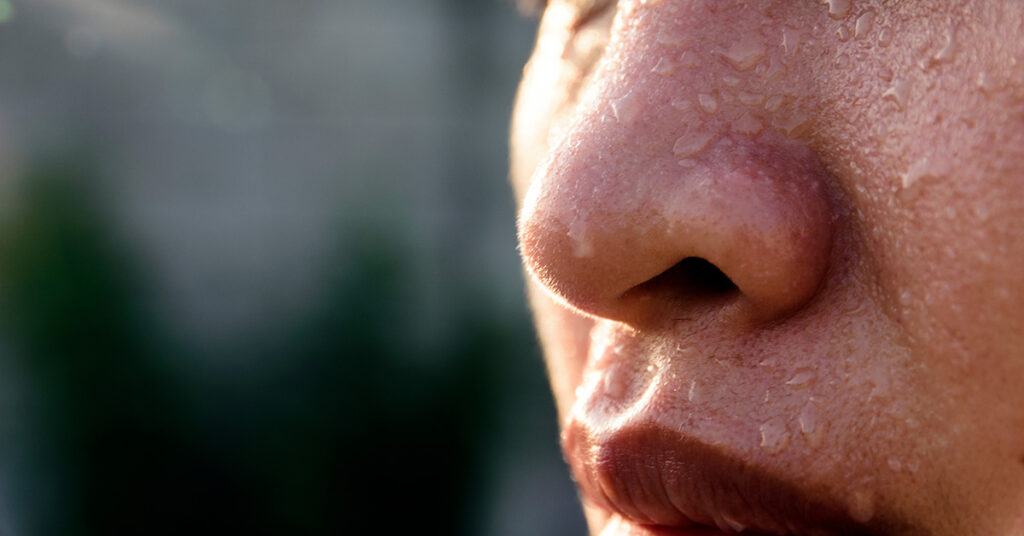
Miradry is a new, non- invasive microwave treatment which has been very effective in treating excessive sweating in the armpits. It’s a permanent solution that uses microwave technology to heat the skin to a critical temperature to destroy the sweat glands and (added bonus) the hair follicles. It is not currently available in SA- here’s hoping for summer 2022!





